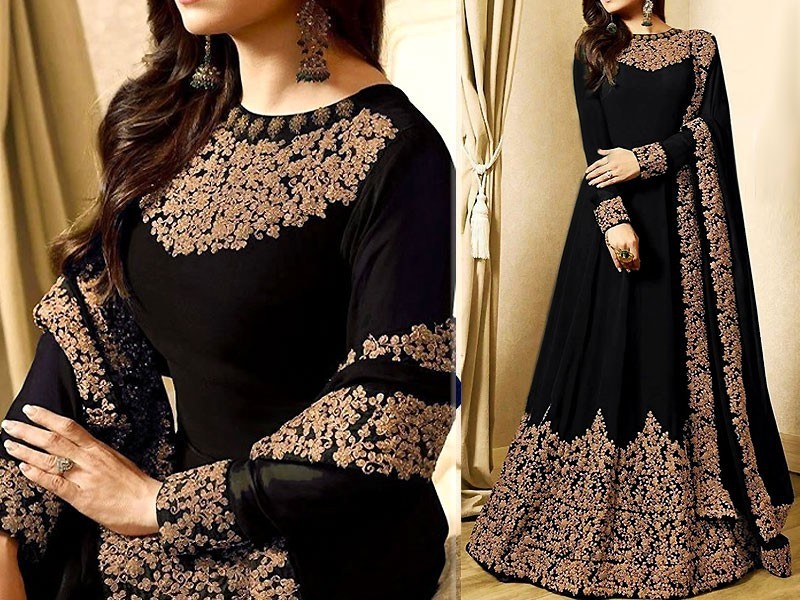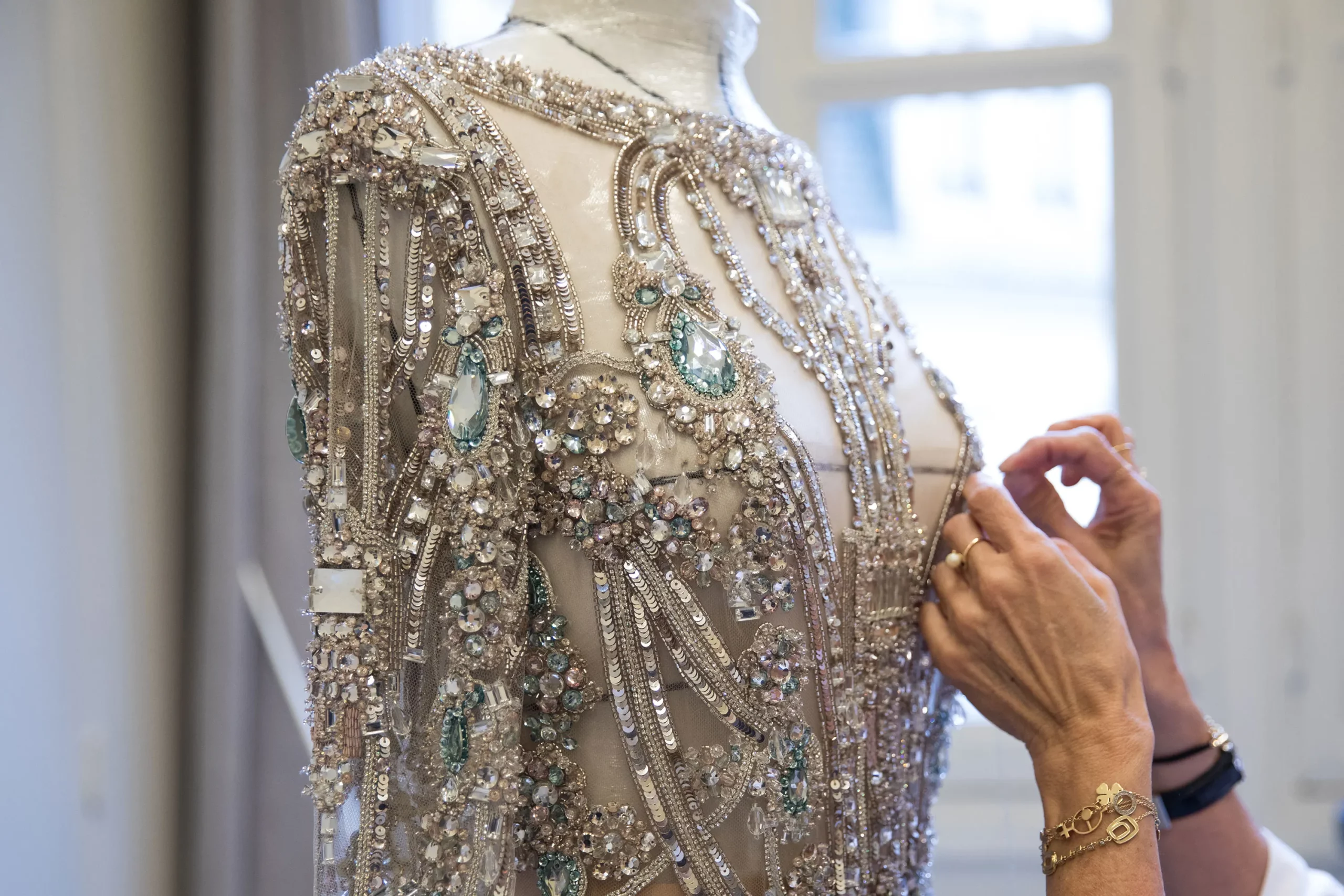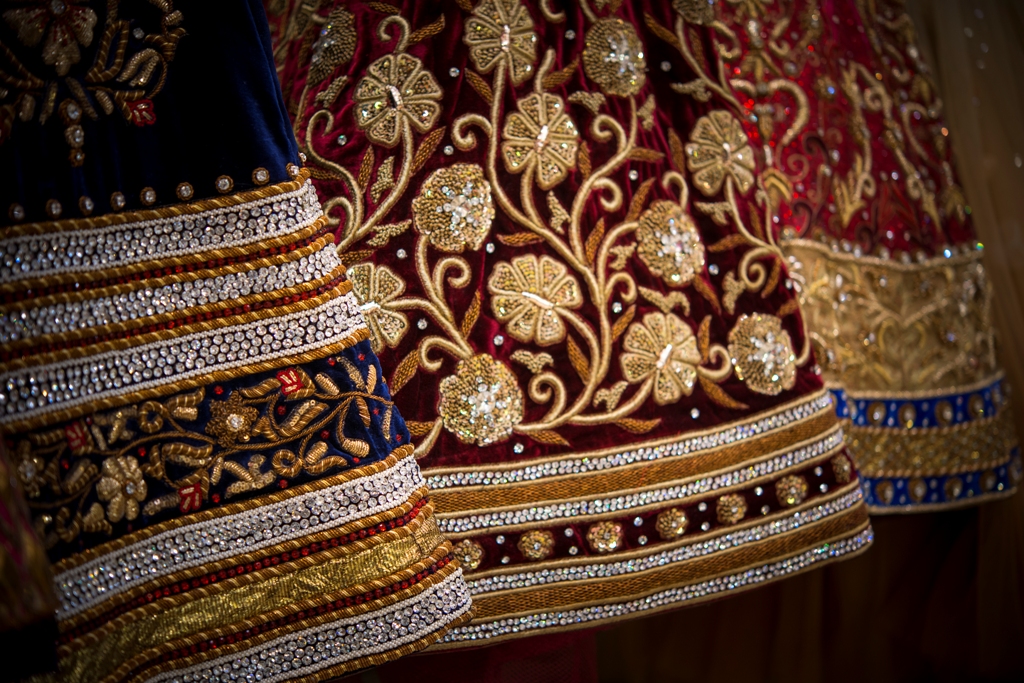In the world of fashion, few garments capture the essence of luxury and cultural richness like hand embellished Pakistani gowns. These exquisite pieces are not just clothing but a testament to the intricate craftsmanship and artistic traditions that have been passed down through generations. Each gown tells a story, woven with threads of history, culture, and unparalleled artistry. In this article, we will delve into the luxury of detail that defines hand embellished Pakistani gowns, exploring their history, craftsmanship, and their place in the modern fashion landscape. We will also touch upon the role of wholesale zari clothing in making these opulent designs accessible to a broader audience.
The Rich History of Pakistani Gowns
Pakistani gowns, particularly those adorned with intricate hand embellishments, have a rich and storied history. The origins of these gowns can be traced back to the Mughal era, a time when art and culture flourished in the Indian subcontinent. The Mughals were known for their love of opulence and fine craftsmanship, which significantly influenced the fashion of the time.
Hand embellished gowns were a staple in the royal courts, where they were worn by queens and princesses as a symbol of status and elegance. These garments were often crafted from the finest materials, such as silk and velvet, and adorned with precious stones, gold threads, and intricate embroidery. The tradition of hand embellishment has endured through the centuries, evolving in style but retaining its essence of luxury and meticulous detail.
The Craftsmanship Behind Hand Embellished Pakistani Gowns
The true essence of hand embellished Pakistani gowns lies in the craftsmanship. These gowns are a labor of love, requiring countless hours of meticulous work by skilled artisans. The process begins with the selection of high-quality fabrics, which serve as the canvas for the elaborate designs.
Fabric Selection
Choosing the right fabric is crucial for creating a gown that not only looks stunning but also drapes beautifully. Popular choices include silk, chiffon, organza, and velvet. Each fabric offers a unique texture and feel, allowing designers to create a variety of looks, from flowing and ethereal to structured and regal.
Embroidery Techniques
The heart of hand embellished Pakistani gowns is the embroidery. Several techniques are used to achieve the intricate designs that adorn these garments. Some of the most popular techniques include:
Zardozi: This ancient form of embroidery uses gold and silver threads to create elaborate patterns. Zardozi work often includes embellishments with pearls, beads, and precious stones, adding to the gown’s opulence.
Aari: Aari embroidery involves the use of a specialized needle to create fine, chain-stitch patterns. This technique is known for its precision and is often used to create floral motifs and delicate designs.
Gota: Originating from Rajasthan, gota embroidery uses gold or silver ribbon to create intricate patterns. This technique adds a metallic sheen to the fabric, making it perfect for festive and bridal wear.
Mirror Work: Small mirrors are sewn onto the fabric to create a sparkling effect. This technique is often used in combination with other embroidery styles to add a touch of glamor.
Hand Embellishments
In addition to embroidery, hand embellished Pakistani gowns often feature a variety of embellishments that add texture and depth to the designs. These may include:
Beading: Tiny beads are sewn onto the fabric to create intricate patterns and add a touch of sparkle.
Sequins: Sequins are used to create shimmering designs that catch the light and add a festive touch.
Appliqué: Pieces of fabric, lace, or other materials are sewn onto the gown to create raised, three-dimensional designs.
The Role of Artisans
The creation of hand embellished Pakistani gowns is a collaborative effort involving skilled artisans who have honed their craft over generations. These artisans, often working in small, family-run workshops, bring a wealth of knowledge and experience to the process. Their expertise ensures that each gown is a masterpiece, reflecting the rich heritage and artistic traditions of Pakistan.
The Modern Appeal of Hand Embellished Pakistani Gowns
While hand embellished gowns are steeped in tradition, they have also found a place in contemporary fashion. Designers are continually finding innovative ways to incorporate traditional techniques into modern silhouettes, creating gowns that appeal to a global audience.
Fusion of Tradition and Modernity
One of the key trends in the fashion industry today is the fusion of traditional and modern elements. Designers are blending classic embroidery techniques with contemporary cuts and styles, resulting in gowns that are both timeless and trendy. For example, a traditional zardozi-embellished bodice might be paired with a sleek, modern skirt, creating a look that is both elegant and fashion-forward.
Bridal Wear
Pakistani gowns are particularly popular as bridal wear. Brides around the world are drawn to the intricate details and luxurious feel of these gowns. Whether it’s a traditional red bridal gown adorned with gold embroidery or a modern white gown with delicate beadwork, hand crafted gowns offer a unique and memorable option for brides on their special day.
Celebrity Endorsements
The global appeal of hand embellished gowns has been further boosted by celebrity endorsements. Many high-profile personalities, both within Pakistan and internationally, have been spotted wearing these exquisite creations at red carpet events, weddings, and other special occasions. Their endorsement has helped to bring the beauty and craftsmanship of Pakistani gowns to a wider audience.
The Role of Wholesale Zari Clothing
The growing popularity of Pakistani gowns has also led to an increased demand for wholesale zari clothing. Zari, a type of thread traditionally made of fine gold or silver, is a key component in many of the embellishments seen on Pakistani gowns. Wholesale zari clothing refers to garments that are produced in bulk using these luxurious threads, making them more accessible to a broader audience.
Making Luxury Accessible
Wholesale zari clothing allows designers to create beautiful, hand embellished gowns at a more affordable price point. By producing these garments in larger quantities, designers can reduce costs without compromising on quality. This makes it possible for more people to experience the luxury and elegance of hand embellished Pakistani gowns.
Supporting Artisans
The demand for wholesale zari clothing also supports the livelihoods of artisans who specialize in this type of embroidery. By providing a steady stream of work, the wholesale market helps to preserve traditional craftsmanship and ensure that these skills are passed down to future generations.
Expanding the Market
Wholesale zari clothing has played a crucial role in expanding the market for hand embellished Pakistani gowns. Retailers around the world are now able to offer these exquisite garments to their customers, increasing their visibility and popularity. This has not only boosted the fashion industry’s economy but also promoted Pakistani culture on a global scale.
Caring for Hand Embellished Pakistani Gowns
Given the intricate craftsmanship and delicate materials used in hand embellished Pakistani gowns, proper care is essential to preserve their beauty and longevity. Here are some tips for maintaining these exquisite garments:
Storage
Hang Properly: Always hang hand embellished gowns on padded hangers to prevent the fabric from stretching or distorting. Avoid using wire hangers, which can leave marks and damage the delicate embellishments.
Use Garment Bags: Store gowns in breathable garment bags to protect them from dust and light. Avoid plastic bags, which can trap moisture and cause damage over time.
Cleaning
Professional Cleaning: Hand embellished gowns should be cleaned by professionals who specialize in delicate fabrics and embroidery. Avoid using regular dry cleaners, as they may not have the expertise required to handle these intricate garments.
Spot Cleaning: For minor stains, spot cleaning with a gentle fabric cleaner can be effective. Always test the cleaner on an inconspicuous area first to ensure it does not damage the fabric or embellishments.
Handling
Minimize Handling: Handle the gown as little as possible to prevent oils from your skin from transferring to the fabric. When necessary, wear clean, white gloves to protect the gown.
Avoid Direct Sunlight: Prolonged exposure to sunlight can cause the colors of the fabric and embellishments to fade. Store the gown in a cool, dark place to maintain its vibrancy.
Conclusion
Hand embellished Pakistani gowns are a true celebration of luxury, craftsmanship, and cultural heritage. From the rich history and intricate embroidery techniques to the modern appeal and role of wholesale zari clothing, these gowns are a testament to the artistry and dedication of the artisans who create them. Whether worn as bridal wear, for special occasions, or as a fashion statement, hand embellished Pakistani gowns continue to captivate and inspire with their exquisite details and timeless elegance. By understanding and appreciating the effort and skill that goes into creating these masterpieces, we can ensure that this beautiful tradition endures for generations to come.
Also Read: Celestial Splendor: Hand-Embellished Dresses with Heavenly Details





